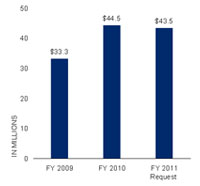Country Profile – Tajikistan
Country Profile – Tajikistan
Tajikistan is a small, landlocked country balancing considerable pressures in a changing region. While relatively stable, the country is increasingly suffering from low economic productivity, high unemployment and extreme poverty. These conditions, coupled with high food insecurity and winter shortages of electrical power are leading the country into a humanitarian crisis. The USAID program in Tajikistan focuses on supporting economic growth (including agricultural productivity), health, education, political reform, democratic institutions and food security.
Download the Country Profile [PDF 120KB]
Programs
Economic Development
To increase agricultural production, USAID trains farmers in modern technologies and management of water and irrigation networks. USAID also supports companies working on food processing, packaging and marketing. Agricultural production assistance has already benefited 281,000 people (5 percent of the country’s farmers). USAID-supported members of 52 water users associations and four federations now have increased capacity to prepare and implement water distribution plans.
In the energy sector, USAID assists with regulatory and institutional requirements and helps reduce operational and management inefficiencies, with the ultimate objective of closer economic integration among Central Asian Republics and between Central and South Asia.
To facilitate regional trade and Tajikistan’s accession to the World Trade Organization, USAID helps reduce trade barriers, introduce a customs automation processing system and expand access to market information. Assistance also aims to improve the handling of budgetary and macroeconomic issues, tax administration, monetary policy, and banking supervision. Other programs help to increase the capacity of the government to introduce progressive land legislation and policies and to implement land reforms.
Investing in People
Over the years, USAID has helped Tajikistan deal with multiple health emergencies. USAID also works to ensure quality, client-oriented, evidence-based and cost-efficient primary health care services. Programs enhance HIV/AIDS and tuberculosis prevention and treatment services for the most at-risk populations, improve potable water supply services and reduce the incidence of water-related diseases.
To improve primary and secondary education, USAID helps Tajikistan introduce innovative teaching methods that stress critical thinking and active learning. Programs also support the restructuring of curriculum standards and a country-wide rollout of a new education financing mechanism that will enhance transparency and efficiency in school finance management. USAID also works with the school community to make schools safer for everyone, especially girls.
Governing Justly and Democratically
With the emergence of independent media in Tajikistan, USAID has helped draft and improve media legislation, train media managers and journalists, and create the National Association of Independent Mass Media. USAID continues to support local media outlets in the production of local television content. Programs also help to develop and implement laws that encourage a strong civil society. More than 60 percent of Tajikistan’s 3,000 nongovernmental organizations received assistance with re-registration of their legal status for compliance with a recently passed law. To help Tajikistan embrace democratic governance principles, USAID assists with the revision of subnational governance policies and trains local government officials to improve their governance skills and the delivery of local services.
To strengthen stability in rural districts of Tajikistan, USAID promoted improved governance and encouraged participation of at-risk and marginalized groups in economic and social revitalization. USAID mobilized a community-based response to meet challenges in more than 63 rural communities in Sugd, the Rasht and Tavildara Valleys, and southern Khatlon province.
Humanitarian Assistance
USAID provided over $1.7 million in emergency assistance following floods in southern Tajikistan in 2009 and 2010. This assistance supported primary and emergency health care services, psychosocial support, protection from water-borne disease, and the provision of relief commodities and transitional shelter materials. In addition, access to basic social services was restored through reconstruction of social infrastructure, such as clean drinking water systems and electricity.
Examples of Our Impact
- USAID’s agricultural sector assistance has helped 5 percent of Tajikistan’s farmers increase their harvests and incomes.
- With USAID support, more than 30 percent of Tajikistan’s municipalities have expanded residents’ involvement in decision making and improved community services.
- USAID maternal and child health efforts helped increase proper hygiene practices in target areas from 3.5 percent in 2009 to almost 100 percent in 2010.
USAID Assistance to Tajikistan

Funding Sources: Assistance for Europe, Eurasia and Central Asia and Global Health and Child Survival Funds
For more information, see the FY2011 Congressional Budget Justification http://www.usaid.gov/policy/budget/









